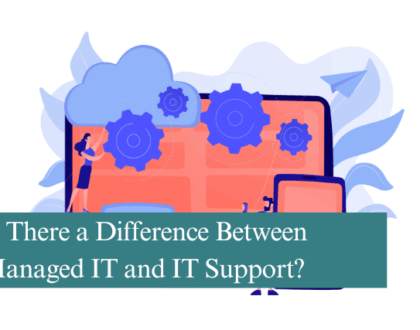If you’re still on the fence about outsourcing your IT department and want to reconsider in-house options, keep reading. We’ll delve into the essential concepts of effective IT support, its scope, benefits, and key outcomes.
What is IT Support?
In essence, IT support offers technical assistance to customers and end-users through a dedicated team of IT professionals, typically accessed via a help desk. Companies have the option to employ their own IT support staff or outsource this function to an external provider.
Benefits of IT Support
Providing IT support offers numerous advantages:
- A centralised help desk for users to seek IT assistance.
- A dedicated team to quickly and effectively resolve faults, including complex issues.
- Support for disaster recovery.
- Controlled and safe software deployment.
- Proactive monitoring and support.
What Does IT Support Do?
IT support encompasses a wide range of technologies that help drive a business forward. This includes, but is not limited to:
- Hardware
- Software
- Network equipment
- Telephony
- Application support
Main Objectives of IT Support
The primary goal of IT support is to maintain an organization’s computer systems and networks, resolve technical issues, and manage end-user requests, such as software installation and hardware configuration. Key areas covered by IT support include:
- User account management
- Computer maintenance and repair
- Server maintenance
- Database and application maintenance
- Cybersecurity, including spam protection and anti-virus services
- Networks, telephony, cabling, and wiring
- Business continuity and backups
- Hosting and cloud computing
Common IT Support Issues
Having covered the areas IT support encompasses, let’s outline some common issues it handles:
- Password recovery and access issues
- Connectivity problems
- Printing difficulties
- Software installation
- Hardware replacement
- Email issues
Managed IT Support: Should You Outsource It?
IT support can be managed in-house or outsourced. Outsourcing your IT department offers several benefits, including:
- Controlled costs
- Contractually guaranteed levels of IT service and support
- Access to experienced IT professionals
- Reduced business risk
- Increased efficiency, as your team will have the necessary training, experience, and qualifications.
The Bottom Line
IT support involves providing technical assistance for your organisation’s technology infrastructure. To ensure effective support, you need to either stay on top of your managed service provider or establish a well-defined service desk structure, which we highly recommend.
Our Approach to Managed IT Support
As a managed service provider, we don’t offer bronze, silver, or gold support packages. Instead, our comprehensive support package ensures we not only respond to user requests but also effectively manage your IT infrastructure on a daily basis, ensuring its continued performance.
Every day, we monitor your network’s performance, internet traffic, virus updates, and backups. This proactive approach allows us to anticipate potential problems before they become issues, preventing downtime and revenue loss for your business. Unlike the traditional reactive IT support model, our focus is on being proactive. Contact us today for a more information.




